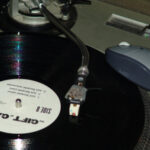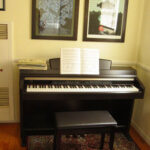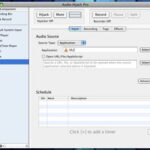This article will discuss the use and implementation of an audio equalizer for a home studio application. An equalizer may come in the form of hardware based systems or software based systems and both types will produce the same basic results depending on the range and quality of either type of equalizer.
There are different types of equalization systems ranging from graphic, parametric, shelving and bell. While they all adjust certain frequencies and can enhance a recording each one can perform specific duties in order to tailor your sound to your projects specific needs.
A graphic equalizer is just that. It shows the range of frequencies in the form of a graph on the hardware versions front display or in your graphical user interface display on your computer screen. Each band can be adjusted up or down effectively cutting or boosting the frequency that you choose to adjust.
A parametric equalizer adjusts groups of frequencies and has less effect on single frequency ranges. The specific frequency is adjusted by cutting or boosting that range and also cuts or boosts the frequency ranges closest to that range in increments. The closest frequencies are adjusted more than those that are farther away from the target frequency. This type of equalizer is most like the on on a stereo with a select group of frequency ranges adjusted by one attenuator.
A shelving equalizer will cut a certain range of low or high frequencies while leaving the desired frequencies on a flat shelf. These are good tools to use if you want to keep all high frequencies in tact while cutting all low frequencies or vise-versa.
A bell equalizer is much like a parametric equalizer and effects certain groups of frequencies that are closest to each other creating a bell shape in the frequency response. This type of equalizer can be useful for boosting or cutting frequencies in each instrument to create a certain type of desired effect such as a “telephone vocal” sound.
All of these types basically do the same job so if you are in doubt about which one to use it is a good idea to simply use the graphic equalizer as it has the finest adjustment for specific effects that you may want to introduce to a certain type of instrument.
Knowing what each instrument does in your mix is important when using an equalizer. You wouldn’t want to boost a lot of treble response on a bass guitar while cutting out all of the bass frequencies. Some treble boost might help to make a bass guitar a little more lively but you really want the bass guitar to do what it was intended to do and that is to create the lower frequencies in your music. The same goes for the bass drum on the percussion track. Enhancing the frequencies of each instrument one track at a time can produce a well balanced mix when it is time to mix down all of the tracks into a stereo mix. Once you have a good stereo mix you can then master the entire recording for release.
The best way to approach an equalization task is to understand the frequency range of each item or instrument that you are working with. Vocal frequency ranges for a male are listed as being around 85 to 180 Hz and a female being around 165 to 255 Hz. Knowing these ranges can assist an audio engineer in his task because the engineer can cut any frequencies above or below these ranges. This can also help reduce “mic” noises such as pops or unwanted vibrations in the noise floor. It may not seem like much but if an engineer removes all unwanted frequencies from each track and instruments the result is a pristine and clean sound from each track. This will make the job a lot easier later on when all tracks are mixed down to two stereo tracks, or in some cases, surround sound.
The human ear can only distinguish or register frequencies in a range between 20Hz (low end) to 20kHz (high end) so anything outside of this range can safely be removed in a recording. Speaker and amplification systems may try to reproduce frequencies outside of these ranges but can not effectively do so. The result will be distortion or unwanted audible artifacts that will not sound natural to the listener so it is always a good rule of thumb to simply cut any frequencies that are outside of the equipments range or the human hearing range.
Is there a set standard for using an equalizer? Not really. Each application may require different settings depending on the desired final result. Too much treble may seem harsh and will cause listener fatigue. Too much bass can destroy a sub system if the volume is set too loud from the amplifier. It is always a good idea to have a friend listen to your mix and to give you constructive input about what they hear. If you want a thick, chunky guitar sound you may find it is a good idea to let the bass guitar and/or the bass drum carry some of the lower frequencies for the guitar and let the guitar operate in the mid to high frequencies that it was designed and intended to perform in. Each instrument or voice will require different applications of equalization and a good way to test each track is a technique called “A/B”. This simply means that you listen to the track without any effects on it and then toggle the effects on in order to compare the two different versions.
A little goes a long way when it comes to working with equalization. Keep in mind that certain frequencies are harsh or they can be muddy and this can ruin an otherwise good mix. Take your time and closely monitor what you are working on. Take a few breaks during sessions to let your ears reset and then come back to your work with a fresh perspective. Your ears are your best tool so when you are working on a mix make sure that it is pleasing to you over a long period of time because if it isn’t then it probably won’t be enjoyable for others to listen to. This can make or break a great song if you aren’t careful. Once again, ask a few friends or other audio engineers to listen to your work and ask what they think could improve it.
Leave a comment below if you have any suggestions or tips for the use of equalization in a recording. Also let us know about the best equalizers that are transparent or add a nice color to a mix in the comment section below.





